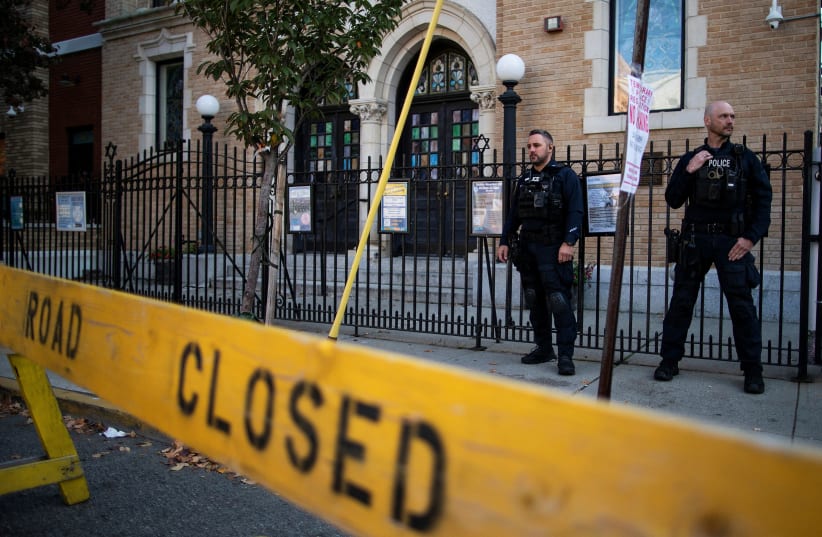It is a hatred as old as the Jewish people itself, one that has accompanied us wherever we have sojourned during our nation’s long and often lonely trek down through the millennia.
Whether rooted in theology, based in ideology or emanating from sheer boorishness, the animus and hostility toward Jews, known as antisemitism, has over the generations repeatedly flared into violence, prompted forcible expulsions and mass conversions, and even fomented genocide.
And yet, despite the fact that it has been around for so long, it seems that no one has been able to come up with a winning formula to cure this virulent and infectious virus.
This raises an important, albeit somewhat controversial question: can we really win the fight against antisemitism?
How can we win against antisemitism?
After all, tens of millions of dollars, if not more, are poured into programs each year by various organizations seeking to quantify antisemitic attitudes, track the number of incidents, as well as educate the public.
Nevertheless, if recent statistics are any indication, it would appear that all these worthy efforts are not having the impact we would have hoped for.

Two months ago, the Associated Press reported on a study issued jointly on the eve of Holocaust Remembrance Day by Tel Aviv University’s Center for the Study of Contemporary European Jewry and the Anti-Defamation League.
According to the report, the number of antisemitic incidents in the US surged by more than 35% in the past year, from 2,721 in 2021 to 3,697 in 2022. American cities with large Jewish populations, such as New York, Chicago and Los Angeles, all saw an increase in antisemitic hate crimes.
Particularly worrying was the report’s finding that “the antisemitism of the far-Right and far-Left are pushing into the mainstream of American culture and politics from both sides.”
Indeed, in just the past 10 days, a 19-year-old in Michigan was arrested for plotting to attack a synagogue, antisemitic flyers were distributed in various counties throughout Pennsylvania, an antisemitic message was carved into an elevator wall in Miami, and neo-Nazis in Georgia waved flags with swastikas as they protested outside two synagogues.
If you’ve spent time on social media, it is clear that antisemitism is alive and well. It is downright frightening just how many people out there do not hesitate to spew the most hateful venom against Jews on public platforms.
Here is some of what I found on Twitter, within seconds of searching: “The Nazis were the real Jews!” read one rant, while another asserted that “All Jews are pedophiles.” Still another opined that “the Nazis are still around but they call themselves Zionist now.”
Some of this hatred is posted by people with just a few dozen followers, but others have thousands, or even more. And if you deem to read some of the reactions to these tweets, you will see that there are many who express support for such views.
Whether we like to admit it or not, social media both reflects and amplifies public opinion, providing an outlet for people to voice whatever they think, while in the process normalizing such discourse and enticing others to join in.
In light of the above, it isn’t surprising that the American Jewish Committee’s State of Antisemitism in America Report for 2022, published in February, revealed that 41% of American Jews feel less secure than they did a year ago.
“That sense of security has eroded, they say, primarily due in large part to the rise in antisemitic attacks, crimes and violence; and how acceptable antisemitism and racism have become.”
The AJC also found that nearly nine in 10 American Jews think antisemitism is a problem in the US, and more than 80% believe that it has increased in the past five years.
This has led to many Jews taking measures to avoid wearing or carrying anything that might identify them as Jewish, such as a yarmulke or Star of David, while almost 20% say they feel unsafe attending synagogues or other Jewish institutions.
GIVEN THIS gloomy picture, it is difficult to be optimistic about the possibility of vanquishing antisemitism entirely, as it has seemingly always been around.
But perhaps that is missing the point.
A more compelling and encouraging narrative would be to suggest that we must aim to contain and curtail antisemitism which, while difficult, is nonetheless a far more achievable goal.
In other words, rather than viewing this in terms of total victory or bust, we should find incremental ways to lower the flames of Jew-hatred.
How to do so requires a coming together of great minds, not only within the Jewish community, but outside it too, with the aim of forging new methods and ideas to tackle the problem.
A good place to start would be to organize an annual national conference focused on combating antisemitism that would galvanize leaders from across ethnic, religious and political boundaries to speak out and take active steps to stop the hate.
As the late Rabbi Jonathan Sacks wrote in his book, Future Tense, “Jews cannot fight antisemitism alone. The victim cannot cure the crime. The hated cannot cure the hate. It would be the greatest mistake for Jews to believe that they can fight it alone. The only people who can successfully combat antisemitism are those active in the cultures that harbor it.”
The writer served as deputy communications director under Prime Minister Benjamin Netanyahu during his first term of office.
